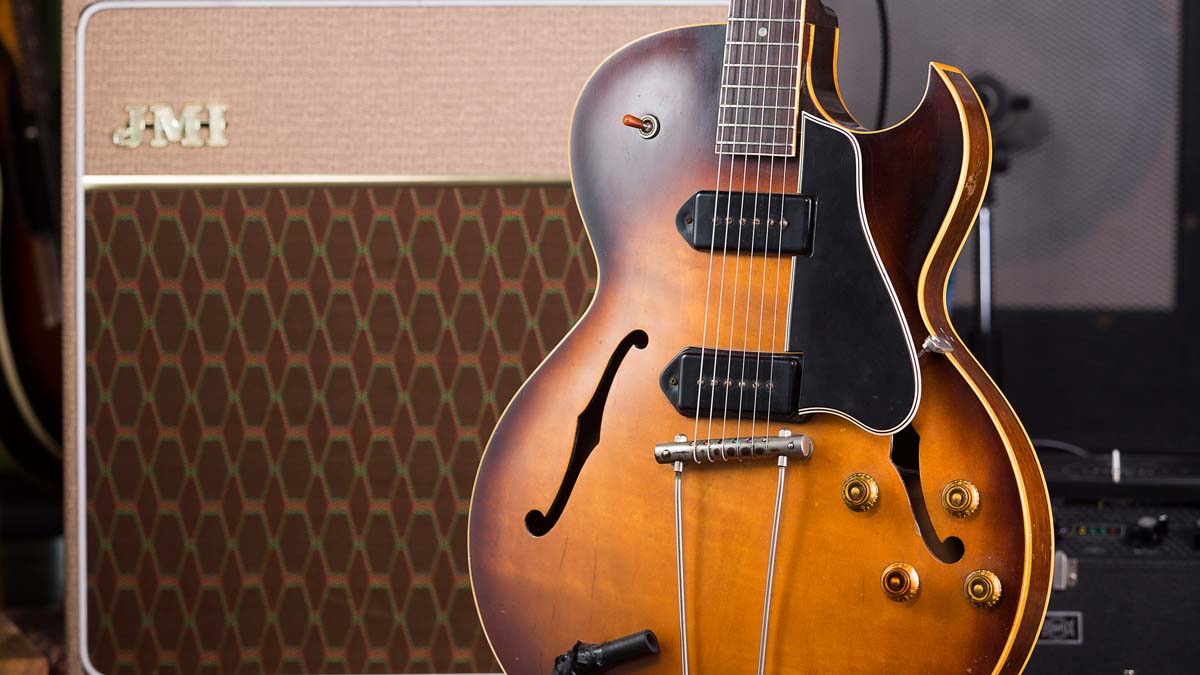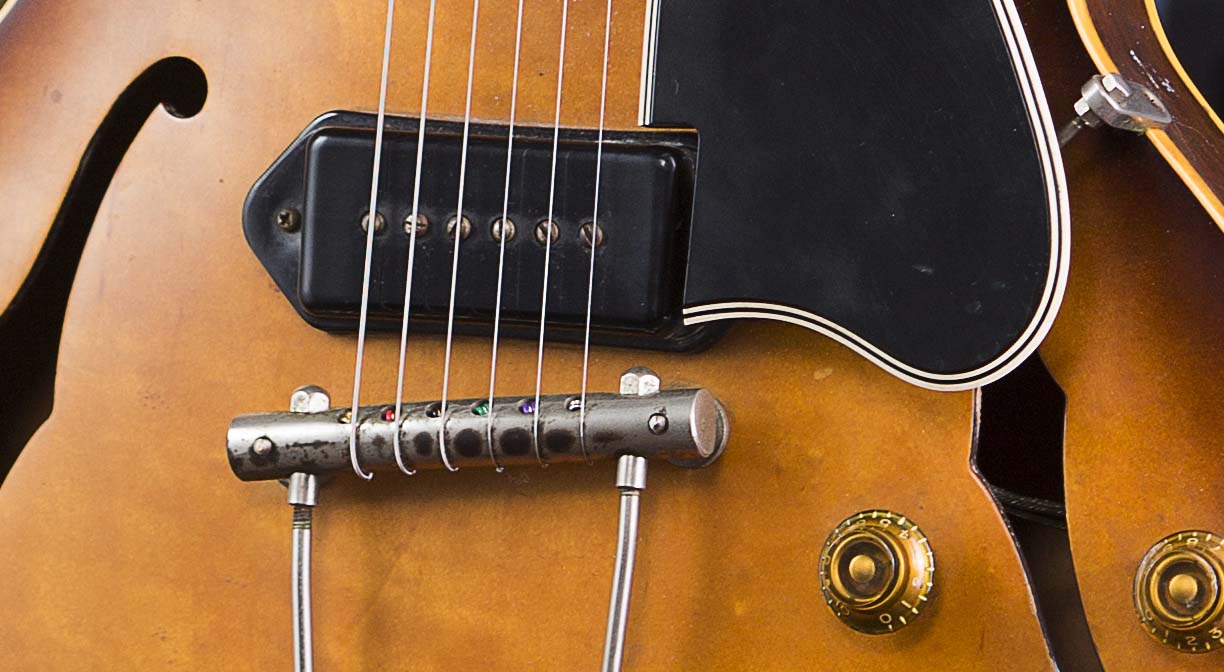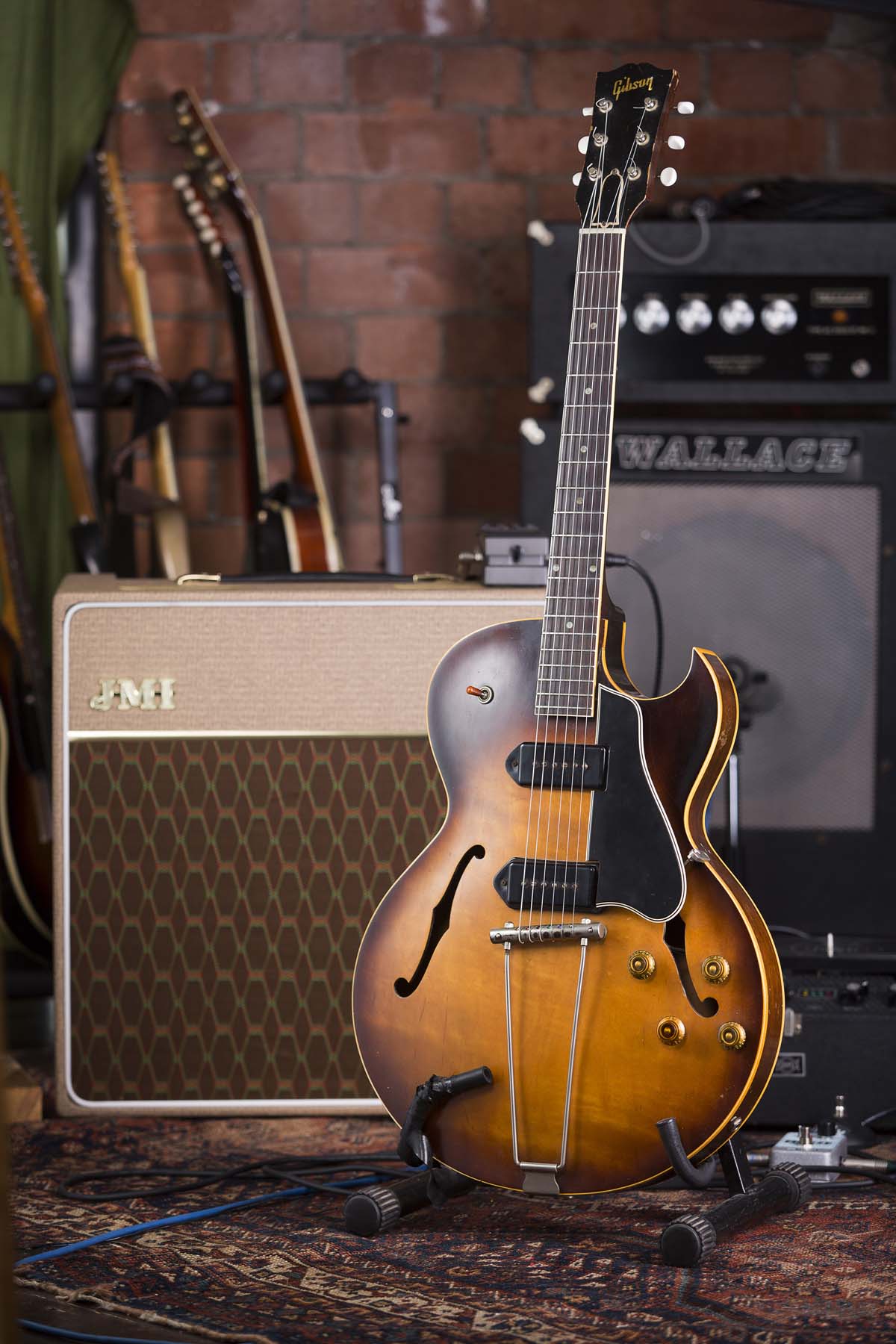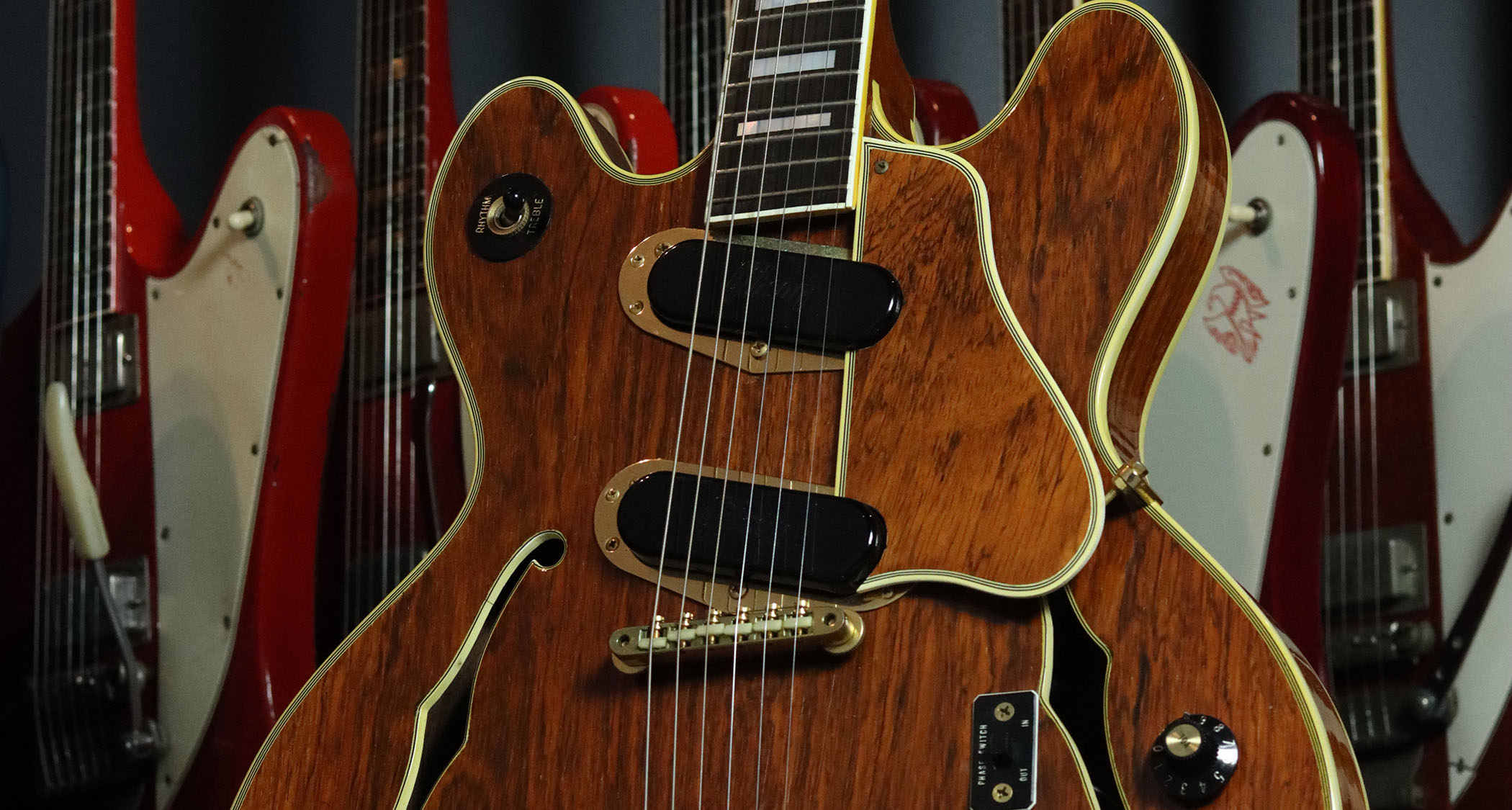Classic gear: Gibson ES-225
The story behind the thinline hollowbodies that helped revolutionize Gibson design

By the mid-'50s, the demand for electric guitars had gained serious momentum. In 1954, Gibson’s electric models outsold its acoustics for the first time, and it became clear that big changes were afoot in the guitar world.
In the first half of the decade, Gibson introduced the 13/4-inch-deep Les Paul range alongside its standard 3 3/8-inch-depth electric archtops, and the new solidbody form began to dominate the market.
Nevertheless, opinions remained divided between the heavier – albeit sturdier, thinner and less feedback-prone – Les Pauls and the more traditional hollowbody electric archtops that many players still enjoyed.
Gibson prototyped the thinlines with feedback from Billy Byrd and Hank Garland
In an effort to reach a happy medium, company president Ted McCarty and his team set about prototyping the first Gibson thinlines with feedback (no pun intended) from some of the leading electric guitarists of the day – notably Billy Byrd and Hank Garland. Unveiled at the July 1955 NAMM Show, the seminal Thin series appeared in the guise of three models.
At the top of the pecking order sat the $550 Sunburst/$565 Natural (‘N’) finish carved-top Byrdland (a portmanteau of endorsees Byrd and Garland’s surnames), while the laminated maple-body ES-350T/N sat in the middle priced $155 less.
“In the popular price field” was the ES-225T – a $179.50 no-frills Sunburst guitar uniquely sporting a single pickup positioned midway between the bridge and the end of the fretboard.
Deriving their laminated maple form from the 16 1/4-inch-wide by 20 1/4-inch long single Florentine cutaway ES-175 and ES-295 models (released earlier in 1949 and 1952 respectively), ES-225s are a full half-inch thinner than the Byrdland and ES-350T guitars, measuring 13/4 inches deep – the same depth as Gibson’s groundbreaking double-cutaway thinline ES-335T released later in 1958.
All the latest guitar news, interviews, lessons, reviews, deals and more, direct to your inbox!

Similarly, whereas Byrdlands and ES-350Ts have a laminated maple/mahogany neck with a shorter 23½-inch scale length, ES-225s feature a one-piece mahogany neck with a standard 24¾-inch scale length and a single-bound/dot inlay rosewood fretboard.
1923
First f-hole archtop (L-5)
1936
First electric f-hole archtop (ES-150)
1952
ES-295 released (same body width & length, Florentine cutaway, combination bridge/tailpiece)
1955
Single pickup ES-225T released; c. 470 guitars shipped
1956
Dual pickup ES-225TD released; c. 1,800 guitars shipped (both models)
1957
c. 2,000 instruments shipped (both models)
1958
c. 2,000 instruments shipped (both models)
1959
Production declines: c. 1,700 instruments shipped (both models)
1960
Discontinued; superseded by ES-125TC and ES-125TCD models
They are perhaps most easily identifiable by their Les Paul combination bridge/trapeze tailpiece – a feature also common to the all-gold finish ES-295. In 1956, the single-pickup ES-225T was joined by its dual-pickup sibling, the ES-225TD (Thin Dual pickups).
Both models were available in either Sunburst or Natural finishes from 1956, with Natural examples being significantly rarer. Of the 8,000-odd instruments shipped between 1955 and 1959, the single-pickup versions are far more numerous than their dual-pickup counterparts combined, accounting for around two-thirds of production overall.
Both the ES-225T and ES-225TD stayed in production and without undergoing any significant spec changes until 1959. At this point, the new double-cutaway thinlines (ES-330/335/345/355) were firmly in the spotlight and both ES-225 models were discontinued, despite their relative success in terms of sales.
However, the following year, the single Florentine cutaway thinline hollowbody electric archtop design was renewed in the form of the ES-125TC and ES-125TCD models (the ES-125TCD was renamed the ES-125TDC in 1961).
As per their ES-225 predecessors, sales of both ES-125 models were relatively strong but dwindled during the late 60s as popular musical styles further evolved. They were eventually discontinued at the beginning of the 70s.

Rod Brakes is a music journalist with an expertise in guitars. Having spent many years at the coalface as a guitar dealer and tech, Rod's more recent work as a writer covering artists, industry pros and gear includes contributions for leading publications and websites such as Guitarist, Total Guitar, Guitar World, Guitar Player and MusicRadar in addition to specialist music books, blogs and social media. He is also a lifelong musician.

